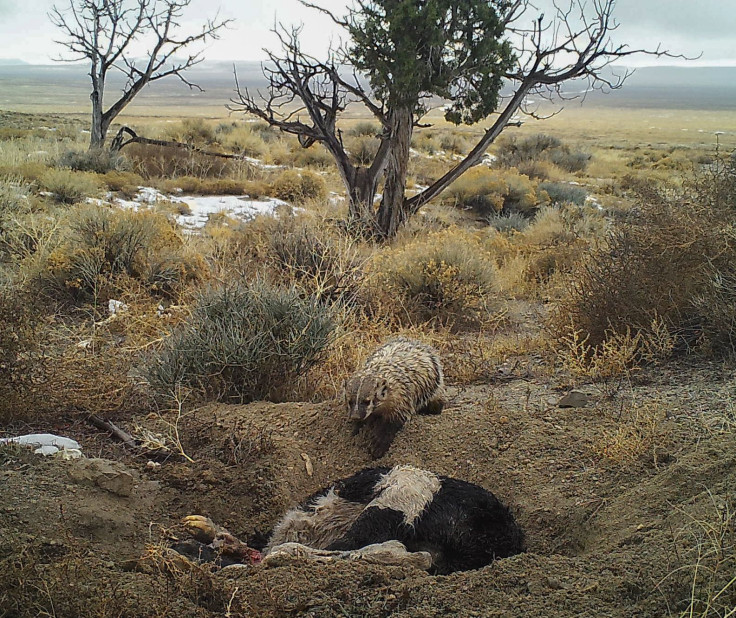A Badger Can’t Kill A Cow, But Can Bury An Entire Calf Carcass All By Itself

When we think of creatures who can lift many times their own body weight or take on prey much larger than themselves, we usually picture insects, alone or in swarms depending on what they are doing. While not quite the same thing, the American badger has been discovered doing something along those lines: burying the carcass of an entire calf all by itself.
The phenomenon was observed almost by chance when researchers from the University of Utah placed seven calf carcasses in the Great Basin Desert to study scavengers in the region. They were put there, along with camera traps, in January 2016 by doctoral student Evan Buechley, who studies vultures and other avian scavengers. After a week, one of the carcasses was completely missing from its original location. When it couldn’t be found anywhere in the area, Buechley returned to the carcass’ original location and realized that the ground had been disturbed.
“Right on the spot I downloaded the photos. We didn’t go out to study badgers specifically, but the badger declared itself to us,” Buechley said in a statement Friday.
The American badger (Taxidea taxus) can weigh up to 24 pounds, and the calf carcass it was seen to have completely buried (over the course of five days, during which time it excavated under the carcass, creating a cavity into which it fell) weighed roughly 50 pounds.
Ethan Frehner, an undergraduate student in his senior year and first author of a paper on the discovery, said in the statement: “Watching badgers undertake this massive excavation around and underneath is impressive. It’s a lot of excavation engineering they put into accomplishing this.”
The study also found another badger, at a different site, that attempted to bury a calf carcass. This led researchers to consider if this behavior is common among badgers but not documented. Badgers routinely cache bodies of smaller animals, like rabbits and rodents, for saving food from other scavengers and to also preserve the food. But the badgers in Utah were the first-ever found to be burying such a large carcass.
It could have implications for both the ecology of the area and for ranchers who traditionally consider badgers pests. By hiding the carcass, the badger could be denying many other scavengers and predators in the region of precious nutrients. And that itself could make them useful for ranchers who would be only too happy to keep predators away from their ranches.
Buechley, who was a co-author of the paper, said: “This adds more questions than it answers. The nutrients in a carcass can be very important for many different organisms in an ecosystem. So if badgers are monopolizing them and they have the ability to bury perhaps any mammal carcass in North America and they’re present across much of the continent, the potential ecological implications are profound.”
© Copyright IBTimes 2025. All rights reserved.





















